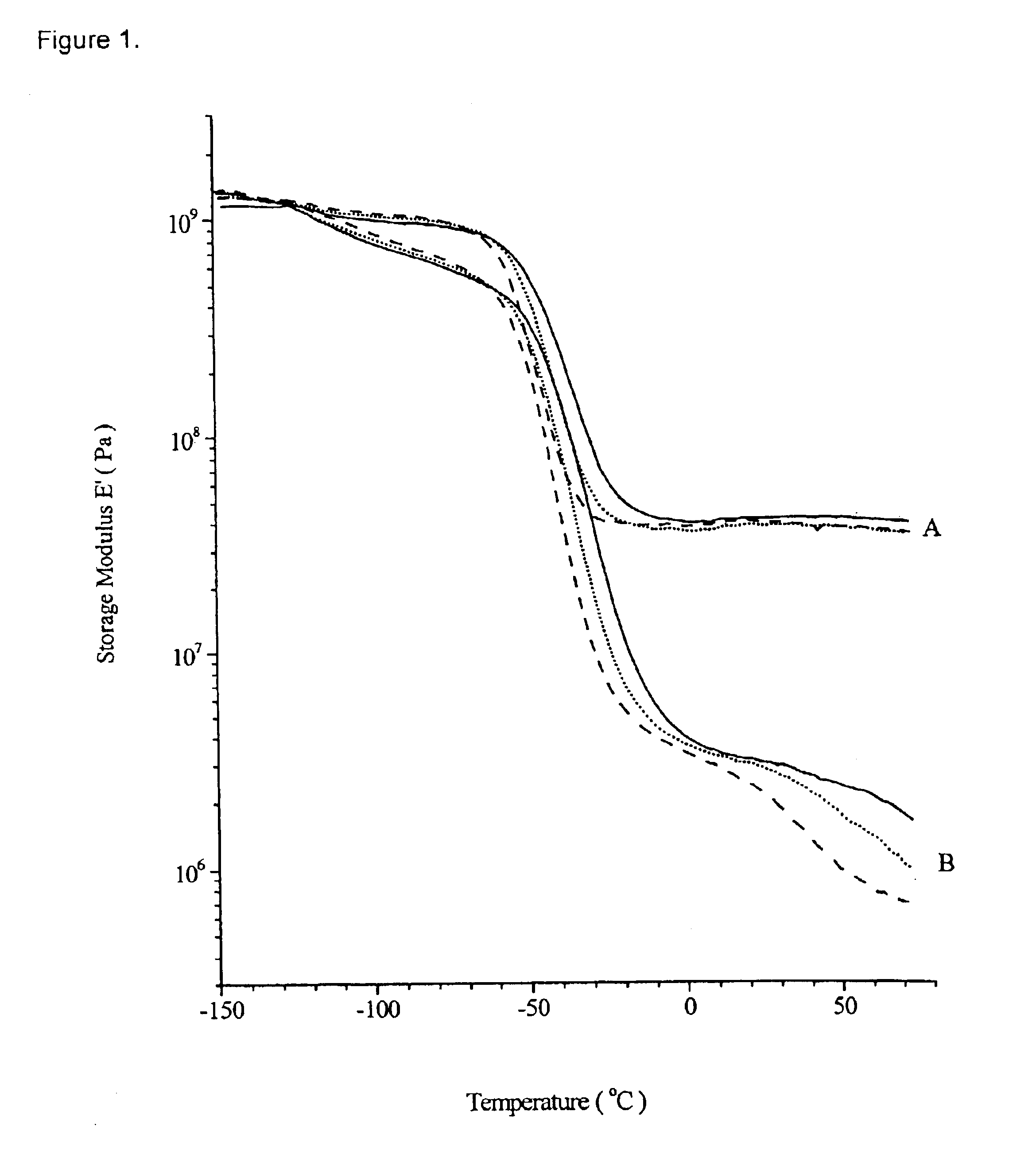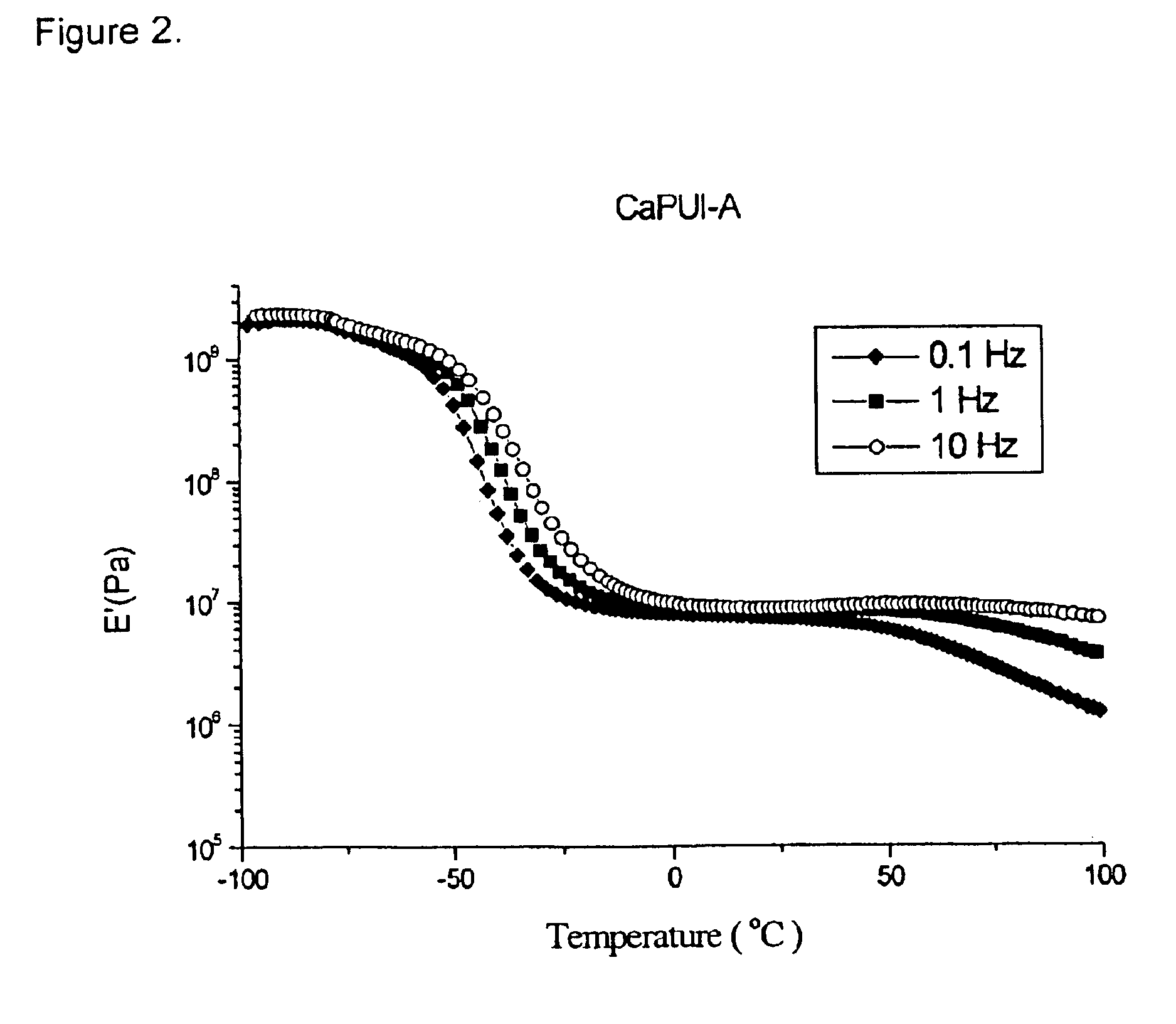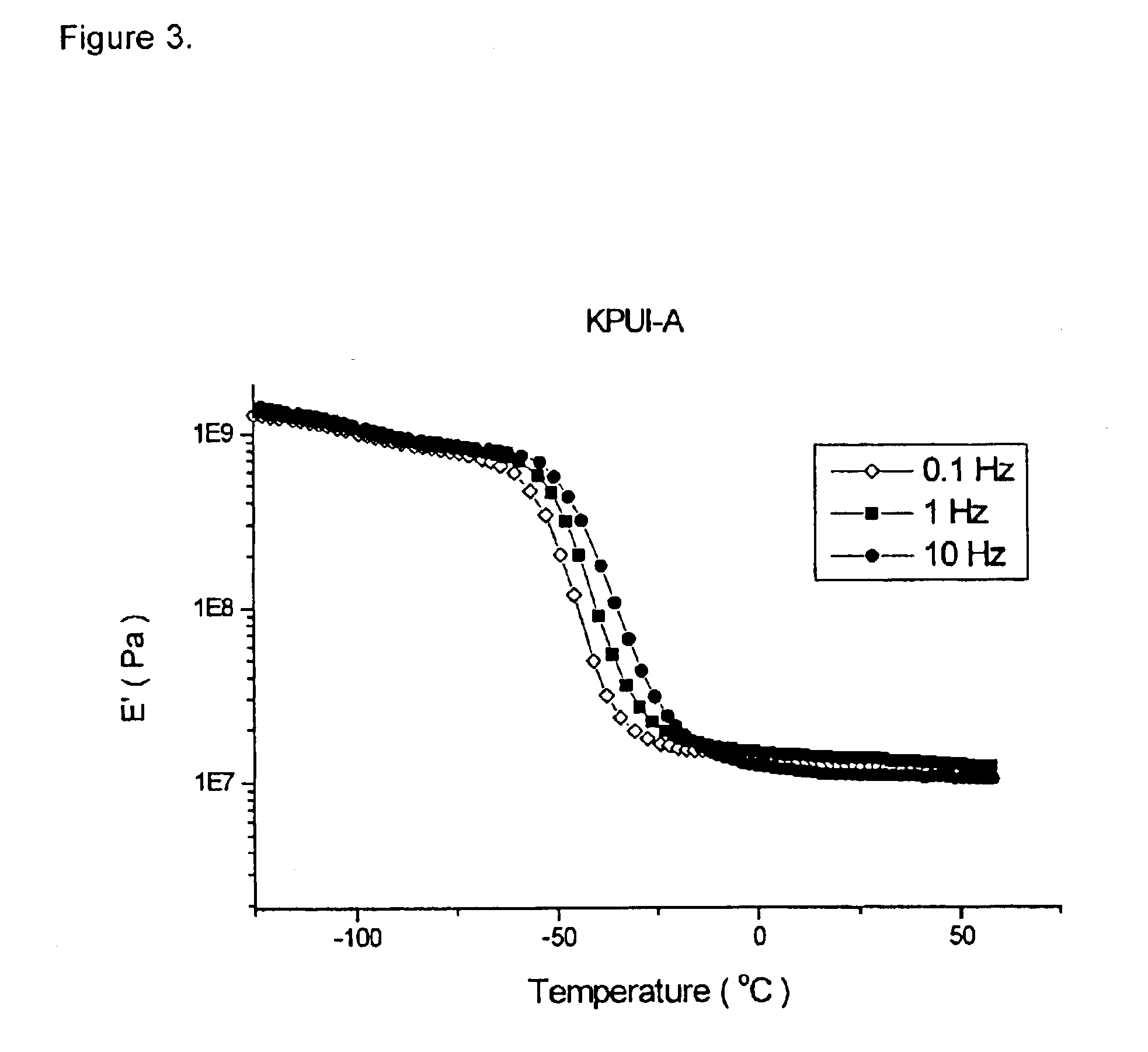Polyurethane ionomer blends and methods for their preparation and formation
- Summary
- Abstract
- Description
- Claims
- Application Information
AI Technical Summary
Benefits of technology
Problems solved by technology
Method used
Image
Examples
example 1
[0097]Synthesis of the sodium DMPA salt microcrystals: sodium dimethylolpropionate. 1.02 mole (136.8 g) of DMPA (dimethylol propionic acid) was dissolved in 80 ml water in a 250 ml beaker to form a solution. To this solution, 0.50 mole of sodium carbonate (53.0 g), was added slowly under stirring at 25° C. After the evolution of bubbles ceased or a clear solution was formed, the solution was concentrated to about 150 mL by boiling and evaporating. Then this solution was cooled by ice water and 1000 mL ethanol was poured in under vigorous stirring. The precipitate was filtered, washed with ethanol for 3 times, air dried at 70° C. for 2 days, then dried in vacuo for 2 days at 100° C.
example 2
[0098]Synthesis of rubidium DMPA salt microcrystals: rubidium dimethylolpropionate. The process was carried as in Example 1, but instead of using sodium carbonate, 115.59 of rubidium carbonate was used (purchased from Aldrich Chemical Co.).
example 3
[0099]Synthesis of zinc and nickel DMPA salt microcrystals: zinc and nickel dimethylolpropionates. The process was carried out as in Example 1, but the sodium carbonate was replaced by 40.7 g of zinc oxide or 37.4 g of nickel oxide.
PUM
| Property | Measurement | Unit |
|---|---|---|
| Temperature | aaaaa | aaaaa |
| Temperature | aaaaa | aaaaa |
| Temperature | aaaaa | aaaaa |
Abstract
Description
Claims
Application Information
 Login to View More
Login to View More - R&D
- Intellectual Property
- Life Sciences
- Materials
- Tech Scout
- Unparalleled Data Quality
- Higher Quality Content
- 60% Fewer Hallucinations
Browse by: Latest US Patents, China's latest patents, Technical Efficacy Thesaurus, Application Domain, Technology Topic, Popular Technical Reports.
© 2025 PatSnap. All rights reserved.Legal|Privacy policy|Modern Slavery Act Transparency Statement|Sitemap|About US| Contact US: help@patsnap.com



